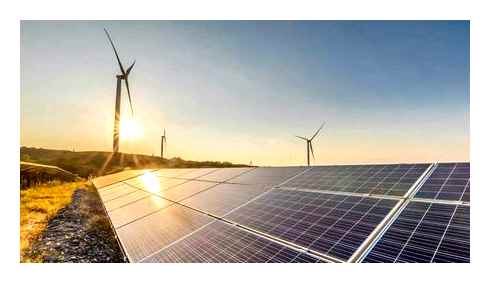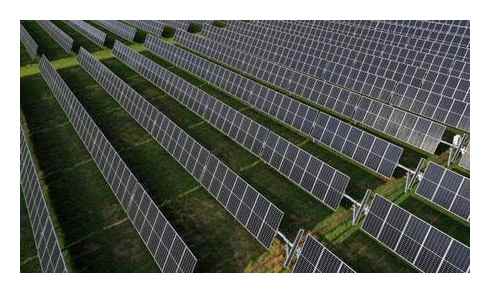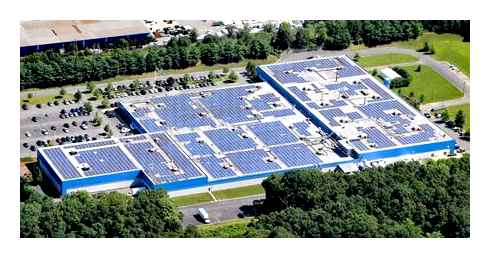Share this:
A Massachusetts incentive program for projects that blend solar energy and agricultural production shows signs of finally gaining momentum after a slow rollout that has at times frustrated solar developers and farmers alike.
In 2018, Massachusetts became the first state to offer financial incentives for “dual-use” or “agrivoltaic” solar projects built above active agricultural land. Since the launch, however, just three projects have gotten up and running. Another eight have qualified for the incentive but not yet been built.
“It’s really frustrating that we’re not further along,” said Jake Marley, manager of Hyperion Systems, a solar developer with a specialty in dual-use projects. “But the conversation is growing. It’s on that precipice of gathering more and more speed.”
Supporters of the concept say it has the potential to simultaneously alleviate two problems: the need to build more renewable energy facilities to reduce greenhouse gas emissions and the need to preserve agricultural land, especially small, local farms.

Massachusetts is aiming to install 3,200 megawatts of solar capacity through a state incentive program at a time when farmland faces growing development pressure.
Get connected
Every morning, thousands of energy professionals turn to our newsletters for the day’s most important news. Sign up for free to get the latest delivered straight to your inbox.
“We want to see as much of that as possible developed in a way that’s supporting farms and keeping farms in operation,” said Ethan Winter, Northeast solar specialist with the American Farmland Trust.
In the past, building solar on farmland has generally meant taking fields out of production, replacing crops with solar panels. Dual-use developments, however, call for solar panels built at a significant height above the ground – Massachusetts policies call for a minimum elevation of 10 feet – and spaced farther apart than in conventional arrays. The added space under and around the panel is intended to allow in enough sun to grow crops for harvesting or for animals to graze.
Solar developers and other experts familiar with the Massachusetts program attributed the low adoption rate to a combination of factors. They include a lack of familiarity with the concept among farmers, as well as the state’s relatively strict definition for which projects qualify, which some say is too narrow and conservative.
“They’re being very careful about how they’re qualifying projects,” Winter said.
Hard to predict outcomes
The program’s rules also had to be tweaked several times to answer questions and smooth out issues that cropped up as the first projects rolled in. While that process was necessary, developers say, it also made it more difficult to reliably plan and budget projects.
The state solar incentive program has allocated 80 megawatts of its capacity to agrivoltaic developments, providing a higher incentive rate to these projects. The rules require solar panels to shade no more than 50% of the growing area and have strict rules regarding elevation. These guidelines apply regardless of a field’s soil type, what plants will be grown, or whether the land will be used for crops or grazing.
A better approach might be to FOCUS less on prescribing the specifications of the array and more on outcomes, Winter said. Some places in Europe, for example, have a production threshold that requires dual-use farmland to achieve a certain percentage of its previous productivity.
The novelty of dual-use arrangements can make it tricky for farmers and developers to get a reliable handle on how a new system will work. It can be difficult to predict results in a system as complex as farming, said Dwayne Breger, director of the Clean Energy Extension at the University of Massachusetts Amherst. Variations in crops, soil type, and farming techniques can all change the outcome. And changes in weather patterns from year to year mean the results from one year offer only limited information.

“There’s an issue with regard to the uncertainty,” Breger said. “It’s hard to come up with definitive information because there’s so many parameters.”
There is also a lack of widespread understanding about dual-use strategies among farmers, Marley said. Farmers operate on tight margins, so taking a leap into a new approach can be daunting without more familiarity with dual-use and its results. And so far there are only a few examples to look to in Massachusetts.
“Once there are more results, I think there will be more acceptance,” Marley said.
Early projects help generate interest
Despite these obstacles, it is widely agreed that progress is accelerating in the dual-use space.
Breger helps the state review predetermination applications for the dual-use incentive, a step that helps developers spot potential problems and work them out before a formal application is submitted. Over the last few years he has seen an uptick in the number of these predetermination requests coming through. In the last few years, he said, there have been roughly 30 projects that have completed this early review and there are another dozen in progress.
The frequency of rule changes has also leveled out, leaving developers with a much better ability to plan projects, said Nick d’Arbeloff, vice president of commercial business for SunBug Solar.
“They polished the policy in a good professional fashion,” he said. “We can now build a system with good confidence that everyone understands how it works.”
The dual-use projects that are operational in the state show promise. In western Massachusetts, Nathaniel Tassinari worked with SunBug to build a 250-kilowatt array on the family farmland he owns in the town of Monson. The project, a community solar development dubbed A Million Little Sunbeams, came online in 2020. The system uses a single-axis design and panels that track the sun throughout the day. The array is elevated above fields where the farm grows hay as fodder for dairy cows.
So far, the panels are outperforming the modeled expectations by some 15% and there has been no noticeable impact to the hay, Tassinari said.
“We can’t really see a discernible difference between underneath and not underneath,” he said.
The project is already serving as inspiration for others interested in the concept. Tassinari estimates he gets about 100 “solar tourists” each year, many of whom are solar developers or farmers trying to get a better feel for how the idea works in real life.
The concept is also gaining traction outside of Massachusetts. The largest dual-use development in the country, a 4.2-megawatt array erected above blueberry fields, debuted in Maine last year. New Jersey has launched a dual-use pilot program and conversations are heating up in states like Pennsylvania, New York, and Illinois, said Iain Ward, founder of agrivoltaic consulting company Solar Agricultural Services.
In 2020, the U.S. Department of Energy awarded 7 million in grants to four projects across the country investigating aspects of combining solar panels and active agriculture. Breger’s team at the University of Massachusetts was awarded 450.8 million to conduct ongoing research at eight pilot sites, including the country’s first solar installation over a cranberry bog.
Current climate and economic conditions may also help push more farmers to consider agrivoltaics. As hotter, drier summers become more common, the shading provided by the panels might actually be beneficial to some crops, Breger said. At the same time, rising fossil fuel and electricity could make solar energy even more attractive than it is already, D’Arbeloff noted.
And agrivoltaics advocates are determined to push through the remaining obstacles, Ward said.
“We’re not letting it fail,” he said. “We’re pushing the envelope on acceptance of this.”
Clean energy incentives and programs
A clean energy system has many benefits, including saving you money. Several PGE and non-PGE incentive programs exist. Each program is specific to the renewable energy technology you plan to install and has its own eligibility rules.
We can also help you find a contractor who will help you to understand the incentives and which program is right for your needs. Visit Find a Contractor.
COMPARE INCENTIVE PROGRAMS
Disadvantaged Communities Single-Family Affordable Solar Housing (DAC-SASH)
The Disadvantaged Communities – Single-Family Solar Homes (DAC-SASH) program is administered by GRID Alternatives, a nonprofit that works to provide solar to customers who are in economically or environmentally disadvantaged communities and are under certain income thresholds. GRID provides incentives to cover the full cost of solar panels on customer homes and enables customers to save on their bills every month. To learn more, visit GRID Alternatives.
Wind, fuel cell and other clean energy
Self-Generation Incentive Program (SGIP)
Install alternative energy technologies in your home to receive an incentive. Some examples include wind, fuel cells and battery storage combined with heat and power systems. To learn more about this PGE program, visit Self-Generation Incentive Program (SGIP). To learn more about the battery storage technology and evaluate if it’s right for your home, visit Battery Storage for Residential Customers.

Solar on Multifamily Affordable Housing (SOMAH)
The SOMAH program provides financial incentives for installing photovoltaic (PV) energy systems on multifamily affordable housing. To learn more, visit the SOMAH website.
California Solar Initiative (CSI) thermal program
The final date to submit new solar water heating applications to the CSI-Thermal program was July 31, 2020. Remaining applications must be completed and receive incentive payment(s) before the program closes on October 31, 2024.
NOTE: Incentive program applications are typically completed by your contractor. If you receive incentives, your contractor may discount your up-front costs with your incentive amount for immediate savings.
Net Energy Metering Aggregation Program
The PGE Net Energy Metering Aggregation (NEMA) program may be a good option for customers looking to utilize a renewable energy system to serve the load of multiple meters on the same property, or on adjacent or contiguous properties. To learn more about NEMA, visit Discover Net Energy Metering Aggregation.
The PGE Virtual Net Energy Metering (NEMV) program allows an individually metered multi-unit property to use the output from a renewable generator (e.g., solar panels) account to provide bill savings to individual units. To learn more, visit Virtual Net Energy Meting Overview.
How do opportunity zones work?
Developers who invest in economically distressed communities through the program are given three tax incentives: temporary deferral, step-up in basis, and permanent exclusion of capital gains.
With temporary deferral, investors can defer tax on prior capital gains reinvested in a Qualified Opportunity Zone. Investors also receive a step-up in basis for capital gains reinvested in a Qualified Opportunity Zone.
A higher basis means lower capital gains. Under the program, the basis steps up by 10% if the investment is held for at least five years, and by an additional 5% if held for at least seven years.
The third incentive, permanent exclusion, says that if held for at least ten years, capital gains from the sale or exchange of an investment in an Opportunity Zone may be permanently excluded from capital income.
Creating a qualified opportunity zone fund
To qualify for the Opportunity Zones program, investors must establish a Qualified Opportunity Zone Fund. This fund holds Qualified Opportunity Zone property.
Many different types of taxpayers can establish an opportunity fund, including corporations, partnerships, limited liability companies, and individuals.
Different segments of the solar industry can take advantage of opportunity zones, including solar equipment manufacturers that produce panels, inverters, batteries, battery charge controllers and components, and equipment that moves DC energy produced by solar panels for conversion into AC electricity, said Petra. Solar installers and solar farms also qualify.
It’s important to understand where the zones are located — and identify whether a solar business can take advantage of the zones, said Spano.
The importance of consulting an attorney
“As business people, we look at the definition of opportunity zones in geographic areas and the qualification requirements of the business,” he said. Because it’s not always easy to determine whether a business qualifies for the benefits, his company always consults attorneys. “Our attorneys advise us about how to present our applications for qualification,” he said.
The eligible tracts for the zones are based on economic indicators of median family income and poverty, said Petra. States are limited to establishing zones in 25% of their low-income communities. In other words, if a state has less than 100 tracts identified as low-income communities, 25 qualify, he explained. The tracts are chosen based on statistics from the U.S. Census.
Consider focusing on Puerto Rico
Puerto Rico — which has been rebuilding its energy infrastructure in the wake of the devastation of Hurricane Maria — received special treatment, with 835 of 945 low-income tracts qualifying as opportunity zones.
“Of particular interest should be Puerto Rico, which after Hurricane Maria has made a concerted effort to promote alternative energy, especially solar energy,” said Petra.
Last year, the U.S. Department of Treasury certified over 8,700 individual census tracts as Qualified Opportunity Zones in 50 states, six territories and the District of Columbia, he said. About 35 million people live in these zones, which are established for 10 years.
Frequently Asked Questions
The size of the system you choose will depend on a few factors, such as the amount of money you want to invest, the amount of electricity you want to produce, and the amount of space you have for installing solar panels. You should review your old electric bills to help determine how much electricity you business or home typically uses. Santee Cooper urges customers to size solar systems with the “offset” in mind. Below is a table comparing system size and “average” customer energy needs. For further assistance, a qualified Santee Cooper Solar Trade Ally or NABCEP Professional can help you determine what size system is right for your home/facility. For a list of qualified Santee Cooper Solar Trade Allies, please contact solar@santeecooper.com or (843) 946-5951.
This chart can give you an estimate of the size array you may need.
MEL users can find their average monthly usage under the Usage tab. All other customers can call us at 800-804-7424.
The type of maintenance that may be required of a system is dependent on the particular system you purchase. Please consult your solar installer and manufacturer to find out if any additional maintenance will be needed.
It depends on your system. Systems with battery backup will continue to have power. Systems without battery backup must shut down until the outage has been restored. Having electricity run into the grid from a solar electric system is a safety hazard for anyone working on the power lines.
Rebates are available for the solar electric portion of a system but not for the battery portion of the system. The rebate is based on the installed capacity (kW AC).
Financing options are available for Santee Cooper’s residential customers only. Santee Cooper also offers on-bill financing for qualifying residential customers through the Smart Energy Loan Program for Renewable Energy for up to 40,000. Learn more information about the loan program here.
If your building is not suitable for solar panels for any reason, participating in the Solar Share program may be a more viable option for you. Solar Share is a community solar program that allows Customers to subscribe to a portion of the energy generated by a Santee Cooper-sponsored community solar farm, without having to install a solar PV system at your home / facility. Customers subscribe to a certain number of blocks (measured in kW) to support the community solar farm, and receive a pro-rated share of the energy produced by the solar farm in the form of bill credits.
A REC represents the property rights to the environmental, social, and other non-power qualities of renewable energy generation. In exchange for rebates offered by the programs, Santee Cooper will retain the ownership of all RECs associated with customer installation of rooftop solar electric system and customer subscription through the Solar Share program.
Yes, applications for increasing the size of a system are subject to the Program Manual, rebate caps, Terms Conditions and other rebate program criteria in place at the time of acceptance of the rebate application. The total rebate per customer over the life of the program is capped at 6 kW.
All qualified Santee Cooper Trade Allies can assist in the rebate application process. Starting Dec. 1, 2019, only solar arrays that are installed by Santee Cooper Trade Allies will be eligible for program incentives.
Please check with your Homeowners Association or any Restrictive Covenants and Conditions first. If there are covenants and/or restrictions in your neighborhood regarding solar electric systems, and you are prohibited from installing a system, you will be ineligible to receive a rebate.

Solar Share – If you move out of Santee Cooper’s territory, Santee Cooper may buy back your solar subscription at a depreciated value, depending on the number of years you have held the subscription. Email solar@santeecooper.com for more information.
Solar Home – If you move out of Santee Cooper’s territory, the next homeowner will be required to sign an amended Interconnection Agreement and receive the credits outlined in the current DG Rider if the next homeowner is interested in retaining the PV system interconnected to Santee Cooper’s grid.
Solar Business – If you move out of Santee Cooper’s territory, the next Business owner will be required to sign an amended Interconnection Agreement and receive the credits outlined in the current DG Rider if the next business owner is interested in retaining the PV system interconnected to Santee Cooper’s grid.
No, the Interconnection Request Application and the Rebate Application are two separate components of the program. Rebate approval is contingent upon fulfilling all of the program requirements. Customers are eligible for rebates if they use a Santee Cooper Trade Ally.
The solar PV system rating must have a minimum rating of 1 kilowatt alternating current (“kW AC”) and must not exceed the lesser of 20 kW or the Customer’s annual peak electrical demand recorded over the past 12-month period from the date on which the Solar Home Application was signed.